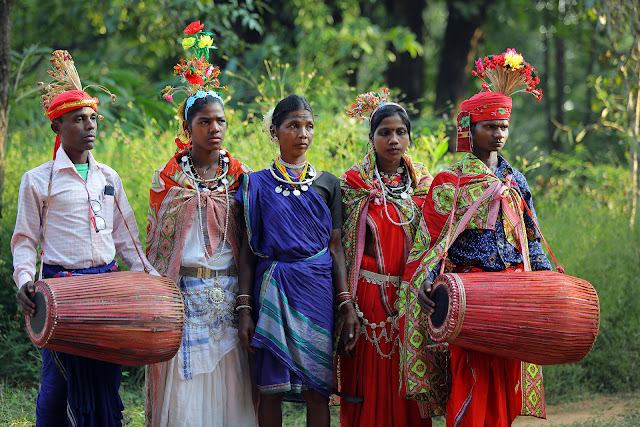The Simple Joys of Butterfly Watching
 |
| A filtered sunrise on a misty morning in Kanha National Park |
My alarm went off at five thirty this morning. Groggy and half-eyed, I stepped out of the bed and pulled the blinds off from my bedroom window. A pall of dark blue with a faint promise of the oncoming sun. Good. As I began to take in the morning light, the gentle taps of a purple sunbird against the window pane reminded me why I had actually risen so early today in the first place, Butterfly-watching.
Now, this is no ordinary instance, for I am staying at a nature resort in the pristine environs of Kanha National Park in Madhya Pradesh, India. Kanha is famous all over the world for its charming Sal forests and Savanna meadows in which live the mighty Royal Bengal Tigers. Surprisingly, it is also the only ecosystem in the world that supports a healthy population of the Hard-ground Swamp Deer - Barasingha. But, regardless of the usual hullabaloo over must-see animals, I was here for the lesser greeted denizens of the jungle.
 |
| My quarters at Serenity Jungle Retreat |
So, after some black coffee and a handful of nuts, I quickly rummaged through my stuff to extract my camera and a couple of lenses. Donning a bush vest, khaki trousers and high-ankle boots, I left my quarters for what awaited me out there.
And I was rewarded almost instantly when I saw a flutter of red, white and yellow against the sky. This beautiful butterfly, a Common Jezebel, was soon joined by a partner of the same specie. The animated couple danced and frolicked in the air without any care about the world. And there I was, running through thorny shrubs and gluggy ground like a possessed creature just to get a decent picture of these beautiful insects.
 |
| A Common Jezebel butterfly finally caught in-flight |
For the benefit of our readers, allow me to make it clear that Butterfly-watching is functionally quite different from other such similar pursuits, say those of tracking a Tiger in the jungle. For the latter, you have to listen keenly to the sounds of the jungle. Where a call of the deer or an alarm of the langur might alert you to the presence of the felines in the vicinity, failing to register these might result in one big missed opportunity for our tiger-enthusiasts. However, a keen sight is what counts significantly more while looking out for our winged friends. With no langur or deer to warn you of their presence, knowledge of their feeding preferences and larval hosts plays a much greater part than one could imagine. There could be several different types of butterflies in the same area at once, and choosing to trail one over the other entails the risk of not being able to see and photograph the bypassed butterfly in the future.
With this in mind, I gambled to chase a Blue Tiger that I'd spotted feeding on a flower's poisonous sap. These butterflies are marked with pale blue stripes and spots throughout the forewing and the hindwing. Unlike previously encountered Jezebels, this tiger was happy to accommodate my intrusion. For the mere beauty of it, I do not mind admitting that for a brief moment I was indeed overcome with a desire to permanently possess it. This would have required me to execute the butterfly and preserve it in chemical solutions inside a glass box. Thankfully wiser counsels prevailed and after clicking a few pictures, I left this one where it happily was.
 |
| A Blue Tiger |
Sun was now rising fast and the whole area was abuzz with the chitter-chatter of birds. My shirt was covered in sweat and trousers in tiny one-way arrows which the native plants deploy when you tread through them as a self-defence mechanism. The hungry pictures of the breakfast which awaited me began to flash in my head. I had to turn back soon. Immediately I saw an Indian Golden Oriole, a bright yellow bird with contrasting black wings and a red beak, soaring across the expanse of the field I was in. Plum-headed parakeets made their appearance and a couple of Rufous Treepies blurted out their crass cacophonies. In this welcome conundrum, I chose to investigate more closely a Danaid Eggfly butterfly that had caught my eye.
 |
| The Danaid Eggfly has distinct white marks on its wings which look like eggs |
This eggfly oozed a calm swagger that I would say is hard to find in other species. Flying with a sense of purpose, assurance and design, it was a joy to watch and photograph this particular butterfly who was clearly unperturbed by my presence.
All in all it was a very fulfilling experience and I definitely intend to spot, observe and photograph more of these charming butterflies in the coming days. Calling it a day (or a morning rather), I stowed away my equipment in their covers and headed straight to the restaurant where hopefully eggs, toasts, bacon and jam awaited me.
- Leo



Comments
Post a Comment